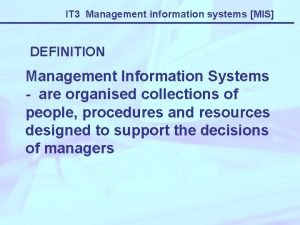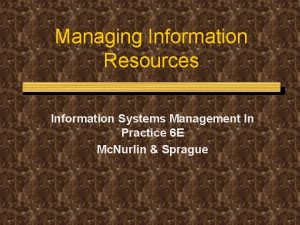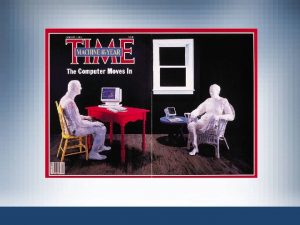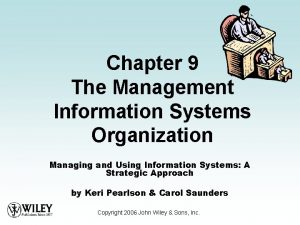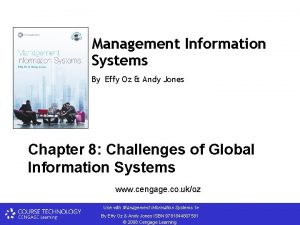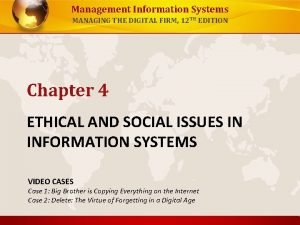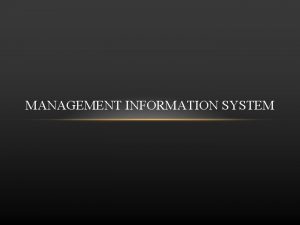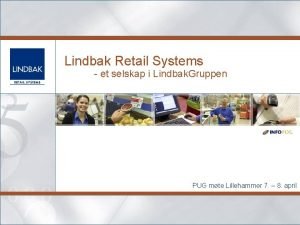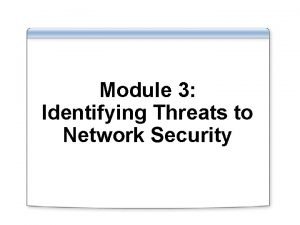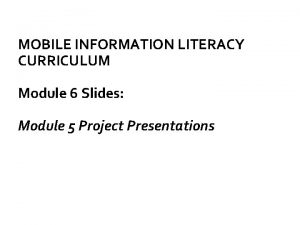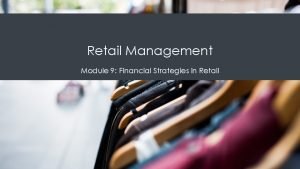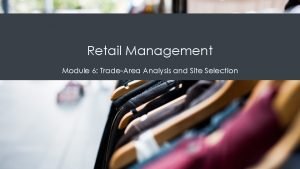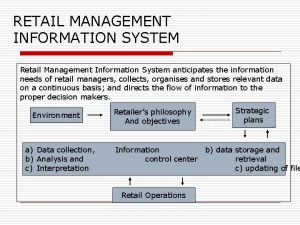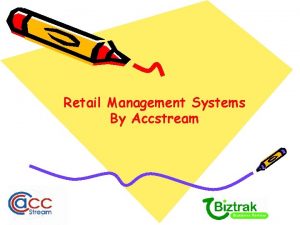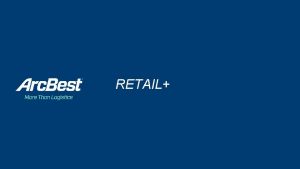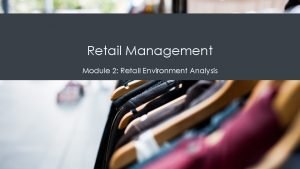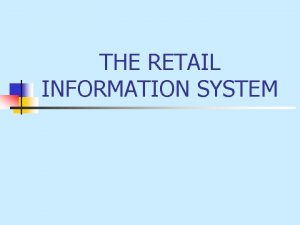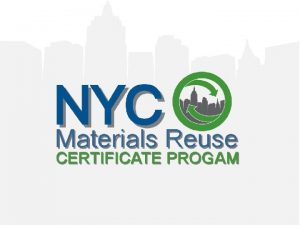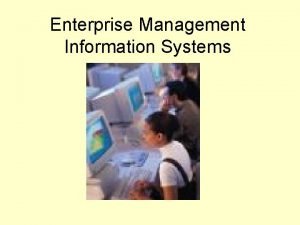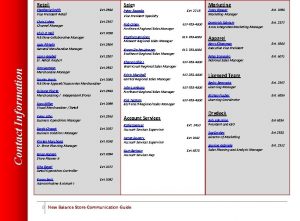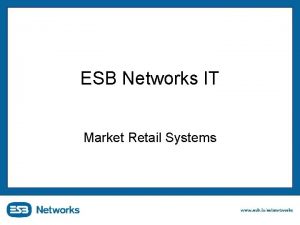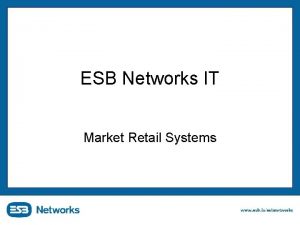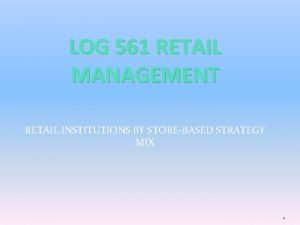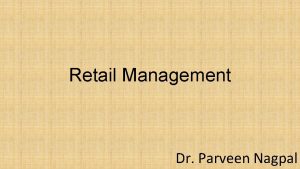Retail Management Module 7 Information Systems in Retail




























- Slides: 28

Retail Management Module 7: Information Systems in Retail and CRM Software

Centralized Data Hubs

Learning Outcomes: Centralized Data Hubs 7. 1 Explain why retailers need a centralized data hub 7. 1. 1 Identify some inconclusive methods retailers may use to gather information and make decisions 7. 1. 2 Define retail information system and the data they can store and manage 7. 1. 3 Differentiate between data warehousing and data mining 7. 1. 4 Describe the purpose of UPC, RFID, and QR codes • •

Methods to Gather Information Traditional methods: • • Observation Intuition Interactive methods: • • • Surveys Interviews Focus Groups Most popular method today: data driven technology!

Retail Information Systems What is a retail information system? Examples of retail information systems: • • • Point of sale (POS) transactions Supply chain Finance HR CRM

Data Warehousing and Data Mining Data warehouse (DW): A system used for reporting and data analysis, and is considered a core component of business intelligence. DW’s are central repositories of integrated data from one or more disparate sources. Data mining: The process of discovering patterns in large data sets and involves methods at the intersection of machine learning, statistics, and database systems.

UPC, RFID, and QR Codes UPC: The Universal Product Code is a barcode symbology that is widely used in the United States, Canada, United Kingdom, Australia, New Zealand, in Europe and other countries for tracking trade items in stores. RFID: Radio-frequency identification uses electromagnetic fields to automatically identify and track tags attached to objects. The tags contain electronically-stored information. QR: A quick response code is a matrix barcode made up of dots. Because it is two-dimensional, it can hold substantially more data than one-dimensional barcodes, such as UPC

Practice Question 1 With the mining of information in the data warehouse, management can gain valuable insights as to how best to run the business. How is this data collection best accomplished?

Supply Chain Management

Learning Outcomes: Supply Chain Management 7. 2 Explore the use of information systems to manage the supply chain 7. 2. 1 Explain the importance of supply chain management 7. 2. 2 Describe the flow of physical goods through a supply chain 7. 2. 3 Explain how a good supply chain management system can increase sales and profits • • •

Activity Before we get started, write down every answer that you can think of to this question based on your experience as a customer. What is a supply chain? If you guessed, then we’re going to learn the definition and how it applies to the study of retail management.

Supply Chains The supply chain is the entire sequence of activities involved in taking natural resources and raw materials and turning them into a product for the consumer What does a supply chain include? • All of the actions, organizations, materials, systems, people, and information involved in that process

Flow of Goods As products are manufactured, they “move” from raw materials or components to finished goods. At some point in that process, RFID or other identification means are implemented to monitor where the product is in its manufacturing lifecycle. The movement through the supply chain process continues when products are aggregated for shipment where they can be tracked during the transportation leg of the supply chain.

Practice Question 2 How can a good supply chain management system help to increase profits?

Supplier and Retailer Coordination How can vendors and retailers coordinate efforts? • Planning sales and inventory levels • • Planning promotions Sharing real-time sales data

Shopping Data Collection

Learning Outcomes: Shopping Data Collection 7. 2 Explore the use of information systems to manage the supply chain 7. 2. 1 Explain the importance of supply chain management 7. 2. 2 Describe the flow of physical goods through a supply chain 7. 2. 3 Explain how a good supply chain management system can increase sales and profits • • •

CRM Purpose of CRM systems: • • Capture internal data about customers and customer interactions and house these data in a central location Provide business users with access to customer data in order to inform a variety of customer touch points and interactions Conduct data analysis and generate insights about how to better meet the needs of target segments and individual customers Deliver a marketing mix tailored to the needs and interests of these target segments and individual customers

Customer Database Primary Categories of Information Stored in a CRM Database: 1. 2. 3. Customer Profiles Customer Activities Customer Management

Collecting Identifying Information • Retailers have collected identifying information since the business of retail was born • Before modern technology, retailers would rely on their memory to know frequent customers by name and use basic technology such as pen and paper to keep track of their clientele • Today, information can be collected simply by the consumer’s use of smartphones to complete a transaction

Privacy Issues Common privacy issues surrounding CRM tools: • • • Data breaches Data theft Personal data being shared legally without the knowledge of the customer

Analyzing the Customer Databse

Learning Outcomes: Analyzing the Customer Database 7. 2 Explore the use of information systems to manage the supply chain 7. 2. 1 Explain the importance of supply chain management 7. 2. 2 Describe the flow of physical goods through a supply chain 7. 2. 3 Explain how a good supply chain management system can increase sales and profits 7. 2. 4 Summarize the benefits of a coordinated effort between suppliers and retailers • •

Identifying Best Customers What does a business “look for” in its customers? • • • Purchase frequency Average purchase amount Lack of returns Response to survey requests Positive reviews on survey Posting positive opinions on social media What is one to one marketing?

Goals of Data Analysis • Market basket analysis gives clues as to what a customer might have bought if the idea had occurred or been suggested to them • How can this analysis be used?

Frequent-Shopper & Rewards Programs Types of rewards programs: • Point system • Tiered reward program • Charging customers an annual fee in exchange for VIP treatment

Customer Retention Techniques • Every day, you are a participant (willingly or unwillingly) in customer retention activities used by retailers and business owners • Examples of these techniques: • • Soliciting customer feedback after each interaction with the company to learn ways to improve customer experience Notifications of upcoming sales events, additional discount offers, cross-marketing campaigns, etc.

Quick Review • Name the various methods of gathering information • Know the difference between data warehousing vs. data mining • Understand the importance of supply chains • Describe three aspects of the customer database? • Analyze what to “look for” in a customer • List methods of retaining customers
 Retail communication process
Retail communication process Organized retail
Organized retail What is retail management information system
What is retail management information system Module 4 operating systems and file management
Module 4 operating systems and file management C device module module 1
C device module module 1 Functions of an information system
Functions of an information system Level of management in an organization
Level of management in an organization Definition of mis
Definition of mis Information systems management in practice
Information systems management in practice Vertical
Vertical Specialized information systems
Specialized information systems Management information systems wiley
Management information systems wiley Essentials of mis, 13th edition
Essentials of mis, 13th edition Management information systems effy oz
Management information systems effy oz Introduction to information systems 5th edition
Introduction to information systems 5th edition Management information systems managing the digital firm
Management information systems managing the digital firm Introduction to mis
Introduction to mis Introduction to management information system
Introduction to management information system Lindbak gruppen
Lindbak gruppen Module 10 topic 2 drivers ed
Module 10 topic 2 drivers ed The body's speedy electrochemical communication network
The body's speedy electrochemical communication network Module 3: information and network security
Module 3: information and network security Media and information literacy module 6
Media and information literacy module 6 Decision support systems and intelligent systems
Decision support systems and intelligent systems Engineering elegant systems: theory of systems engineering
Engineering elegant systems: theory of systems engineering Embedded systems vs cyber physical systems
Embedded systems vs cyber physical systems Elegant systems
Elegant systems Financial strategy in retailing
Financial strategy in retailing Trade area analysis in retail management
Trade area analysis in retail management







